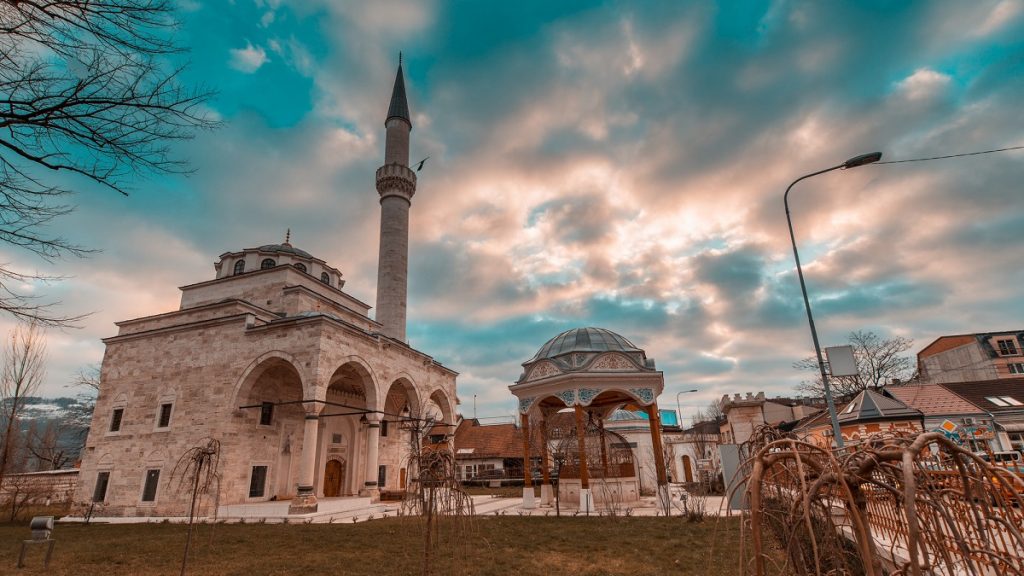
As the central masterpiece of Banja Luka’s Islamic heritage, Ferhadija mosque stands tall as one of the most remarkable achievements of 16th-century Islamic architecture in Bosnia & Herzegovina.
A Glimpse into the Past
The Ferhadija Mosque was built in 1579, in the classic Ottoman style, by the skilled hands of an unknown master architect, who is believed to have been a disciple of the renowned Mimar Sinan. The visionary behind this masterpiece was none other than Ferhat Pasha Sokolović, a prominent figure in history.
Legend has it that the mosque’s construction was linked to a significant event—a fateful battle between Ferhat Pasha and Baron Herbert Auersperg. The clash resulted in the defeat of the Habsburgs, and as part of the redemption, Ferhat Pasha transformed the victory into a masterpiece—the iconic Ferhadija Mosque.

Architectural Marvels Unleashed
The Ferhadija Mosque stands as an architectural marvel, boasting a unique spatial design unlike the typical mosques of its time. Unlike the Istanbul-style mosques with a single dome covering the entire prayer area, Ferhadija embraces an extraordinary concept. Its grandeur spans 18 meters in width, 14 meters in length, and the dome’s pinnacle reaches an astounding 18 meters in height. A majestic 43-meter minaret graces its side, adding an ethereal touch to the landscape.
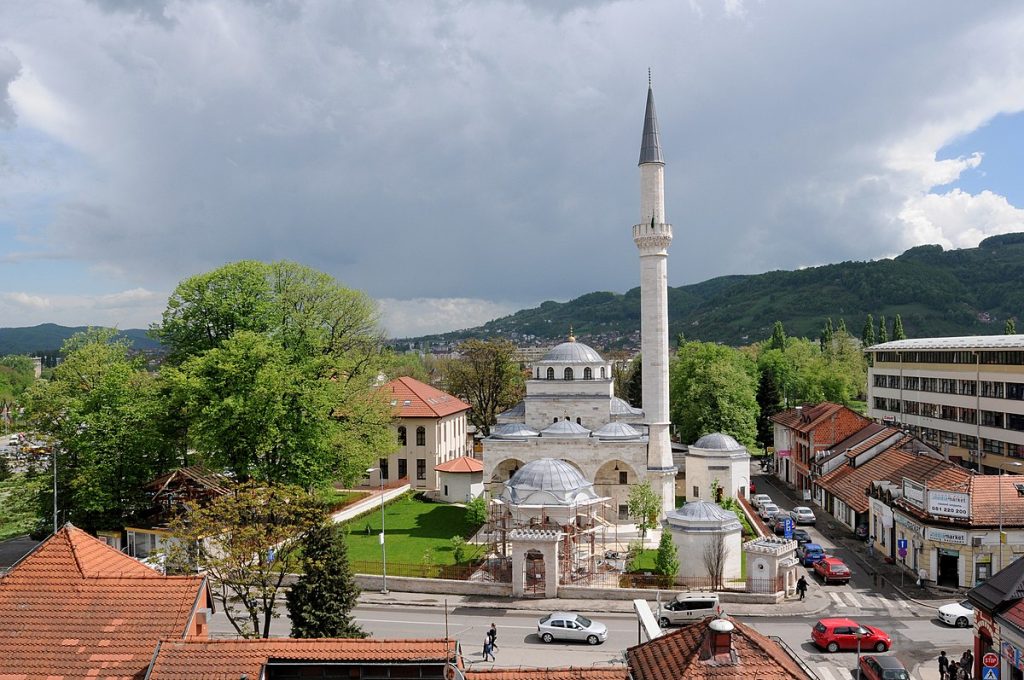
Through the centuries, the Ferhadija Mosque complex was adorned with three splendid turbets—a testament to the remarkable figures it commemorated.
Besides, the complex housed a magnificent iron and stone fence with a charming fountain in one corner, a serene courtyard with a sardvan, and an ancient cemetery that echoes the whispers of time.
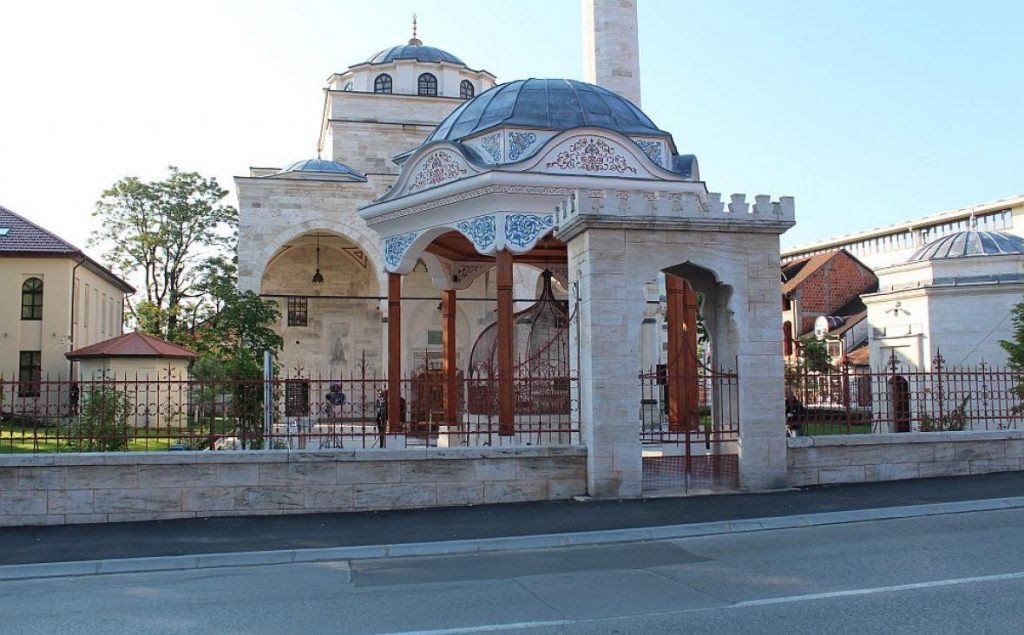
A Tale of Resilience
The Ferhadija Mosque has weathered the storms of history. Unfortunately, during the last war, the mosque faced devastation when it was partially destroyed by explosives on May 7, 1993. However, the indomitable spirit of the community prevailed, and the reconstruction journey began.
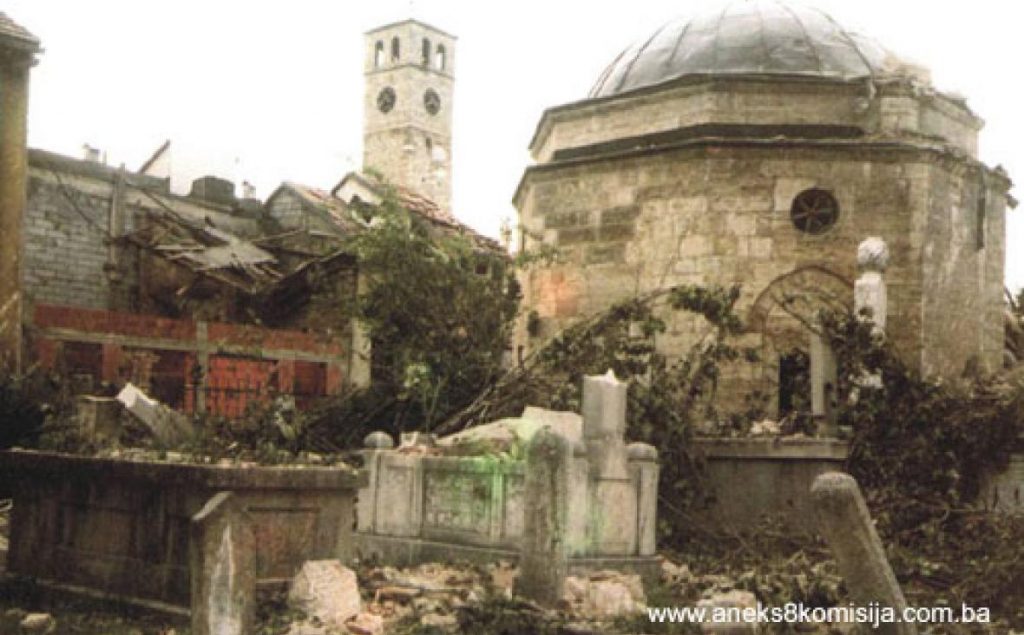
After years of challenges and controversy, the reconstruction of the Ferhadija Mosque was completed in 2016. As the rays of the sun bathed its newly restored walls, thousands of faithful believers and esteemed guests gathered to celebrate its triumphant return. The solemn opening ceremony, graced by the presence of religious dignitaries and government officials, marked a poignant moment in history.
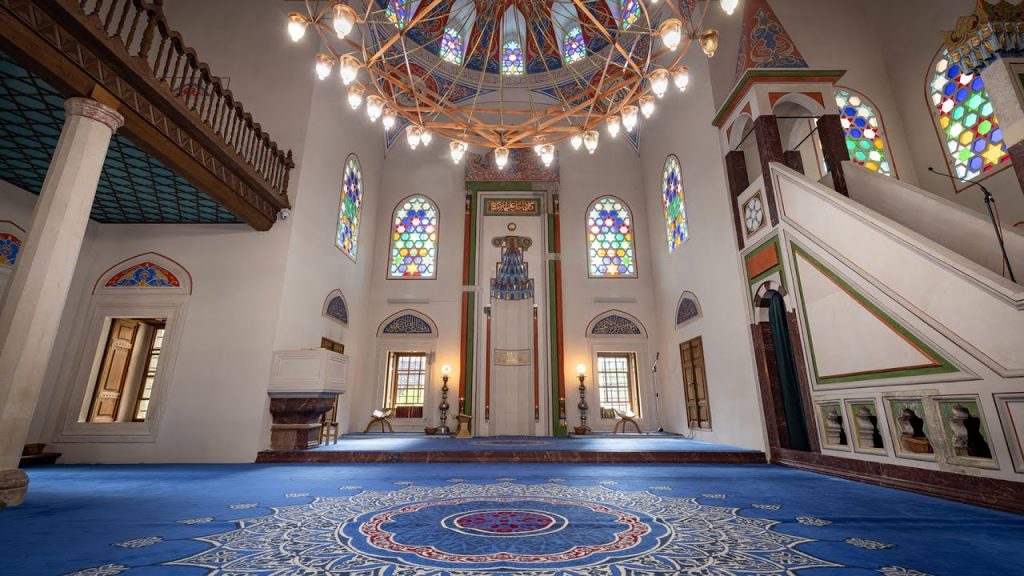
Today, Ferhadija Mosque revered as one of the three most significant mosques in all of Bosnia & Herzegovina, standing alongside Gazi Husrev-beg Mosque in Sarajevo and Aladža Mosque in Foča, and stands tall once more, embracing visitors with its timeless charm and welcoming everyone to witness the echoes of the past and the prayers for a harmonious future.

Info
If you are a tourist who is visiting a mosque, here are some tips to keep in mind:
- Dress appropriately: In most mosques, visitors are required to dress modestly. This means that women should wear long sleeves and pants or a long skirt, and cover their hair with a scarf. Men should wear long pants and shirts with sleeves.
- Remove your shoes: Before entering a mosque, you should remove your shoes. There is usually a designated area where you can leave them.
- Respect the prayer times: Mosques have designated prayer times throughout the day, and during these times, visitors are not allowed to enter. It’s important to be aware of the prayer times and plan your visit accordingly.
- Follow the rules: When you enter a mosque, be sure to follow the rules and guidelines. For example, some mosques may require visitors to enter through a specific entrance, or may not allow photography inside.
- Be respectful: Remember that a mosque is a place of worship for Muslims. Be respectful of the space and the people around you. Avoid loud talking or disruptive behavior.
By following these tips, you can have a respectful and enjoyable experience visiting a mosque as a tourist.
